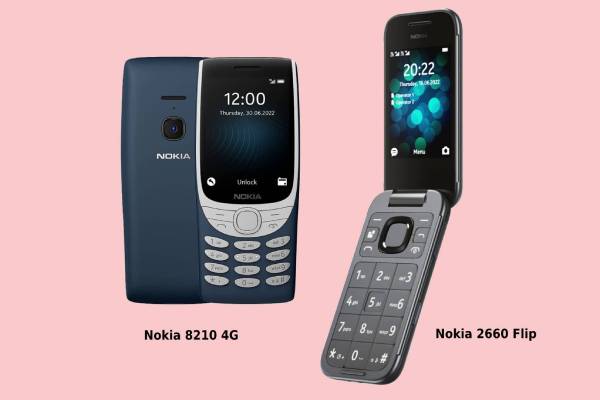
By Anand Parthasarathy
September 29 2022: Anyone old enough to remember the early years of the mobile phone in India – around the turn of the century – won’t need reminding about the near- iconic status that a Nokia handset held.
A nicely rounded, rugged build that fitted snuggly in the palm of one’s hand; chunky, large keys that gave a reassuring click and a battery that seemed to go on and on forever – and one that could be replaced by the user, when it finally died, for a few hundred rupees, at almost any mobile dukaan, .
Nokia was the first device company to recognize the potential of the Indian market – and appreciate that it had to be treated differently from the West. At an Asia-Pacific media event in Singapore, around 2001, I bumped into Jan Chipchase, an ethnographer from Nokia’s Finland headquarters, who had roamed our rural heartland, and even stayed in places like Dharavi, then the world’s largest shanty town in Mumbai, to understand the needs of the Real India.
He shared with me details of the last socio-demographic finding that he had relayed to his employers: Why so many Indians, especially in South India, carried their mobile phones in their shirt pockets rather than in a pouch on a trouser belt, as customers in Europe tended to do. Simple! Most customers in South India didn’t wear pants and their veshti, lungi or mundu, did not have a pocket!
Out of such localized research came Nokia’s special features for India, like a ‘Panic Button’ that allowed elderly users to simultaneously alert a few contacts, when they had a medical or other emergency. Later the Indian government made it a compulsory feature for entry level feature phones.
Made-for-India
Also, as a result of Nokia’s study of the India market, came the push button torch (making dual use of the camera flash) as a feature of some phones: Truck drivers in their lakhs who found this to be a saviour when having to check out a flat tire on a pitch-dark highway, made the brand their choice.
This probably gave rise to the media legend that in parts of India that qualified as Bharat, people used to walk into an electronics shop and just say, “Mujhe, ek Nokia chahiyeh!”. Nokia for almost 5 years in India was synonymous with mobile phones.
When more phone makers entered the market, some with more attractive value propositions, Nokia quit the handset business to concentrate on its enterprise networking products. Another Finland-based company – HMD -- inherited the Nokia devices brand and while competing in leading edge premier devices, it continues to respect and serve the entry level buyer in price-sensitive markets like India with regular launches of ‘retro’ models that are a throwback to its classical roots among down-to-earth users who have no money to waste: the paisa vasool experts.
In recent days, I have had the opportunity to try out a few of these Nokia handsets recently launched in India at price points below what is generally accepted the Lakshman Rekha of affordability: Rs 8000 - 10,000. Indeed HMD has a sensible and down-to-earth motto: Connect the World, without Costing the Earth”.
It gives one goose pimples to hold one of these retro Nokia phones, designed to look and feel like models first launched in India around 1999-2001, even bearing similar device names, yet with up-to-date, if frugal features under the hood
The new Nokia 8210 4G looks startlingly similar to the 8210 phone that Nokia unveiled in 1999, at the time its smallest and lightest model. Today’ avatar is compatible with 4G networks and can take dual Voice over LTE or VoLTE nano SIMS. The display is small by current standards – 2.8 inches; the single camera is a passable 0.3 megapixel, and the onboard memory of 128 MB would encourage users to add a micro-USB card of 32 GB for reasonable storage. It is still an extremely light handset at 107 grams and the 2.75-watt battery is removable. At Rs 3999 it is among the cheapest feature phones on the market right now.
In form and feature, the 8210 can be mistaken for what was their most successful handset ever in India and elsewhere, the 3310, launched in 2000.
Pay just a little bit more – Rs 4669 – and you can have the Nokia 2660 Flip, with very similar specifications to the 8210 4G, but with another nostalgia-inducing feature: the flip cover with its own display that at all times, displays date and time in bold letters. There are two other features that will endear this phone to senior citizens, the main class of users which still prefers old fashioned phones for talking and texting -- without a lot of multimedia bells and whistles:
-The earphone jack is compatible with standard M4 or T4 hearing aid couplings.
-And a separate button on the side wall serves as a Panic Button, which one can programme to alert up to five contacts.
A plethora of choices confront the mobile phone buyer today. For Gen X and Millennials – those born respectively between 1965-80 and 1981-1996 -- going for max features, jumbo memory, super-duper displays may be a no-brainer.
But for those of us who are clubbed as the baby boomers, born in the two decades after World War II, brightest and jazziest is not always best. If a phone maker tells us its designs are ‘inspired by yesterday, but built for tomorrow’, we tend to see a kindred spirit. And when we learn that they were built in India -- at plants in Kancheepuram (TN) and Noida(UP) --that's a reason to cheer as well.
A longer version of this article has appeared in SwarajyaMag